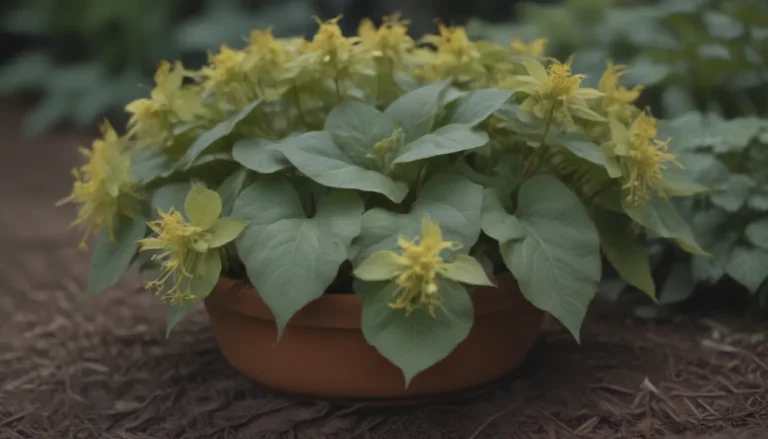The Ultimate Guide to Growing and Caring for Sweet William

Welcome to the ultimate guide on how to grow and care for Sweet William (Dianthus barbatus)! In this comprehensive article, we will explore everything you need to know to successfully cultivate this beautiful flowering plant in your garden. Whether you are a beginner or a seasoned gardener, this guide will provide you with valuable information on the care and maintenance of Sweet William.
Introduction to Sweet William
Sweet William is a short-lived, herbaceous perennial or biennial that is often cultivated as an annual flower. With its vibrant shades of blooms and attractive foliage, Sweet William is a popular choice for cottage gardens, perennial beds, and containers. This flowering plant is not only visually appealing but also attracts beneficial pollinators such as butterflies, bees, and hummingbirds. However, it is important to note that Sweet William is mildly toxic to pets and people.
Sweet William Care Tips
Sweet William is relatively easy to grow, provided you meet its basic needs. Here are some essential care tips to help you cultivate healthy and vibrant Sweet William plants:
Light
- Sweet William thrives in full sun, although it can tolerate light shade.
- Avoid too much shade, as it may result in leggy and floppy plants.
- In hot regions, provide some afternoon shade to help prolong the bloom time.
Soil
- Sweet William prefers well-drained, fertile, loamy soil.
- It can tolerate various soil pH levels but generally does best in neutral to slightly alkaline soil.
- Some growers add lime to the soil before planting.
Water
- Water Sweet William regularly throughout the growing season, but avoid overwatering.
- Waterlogged conditions can lead to fungal diseases, so ensure the soil is moist but not saturated.
Temperature and Humidity
- Sweet William is relatively cold-hardy and can survive light frosts.
- High humidity and temperatures above 85°F can result in dormancy for the plant.
Fertilizer
- Feed Sweet William with an all-purpose fertilizer every 6 to 8 weeks during the growing season.
- Follow the product label instructions for the correct amount to use.
Pruning and Propagating Sweet William
Pruning
- Late winter or early spring is the best time to prune Sweet William.
- Trim off stem tips to control the bushiness of the plant.
- Thin out weak and leggy stems to encourage airflow within the plant.
Propagating
- Propagating Sweet William from cuttings is possible.
- Due to its short-lived nature, many gardeners prefer to purchase cold-treated plants in the spring for annual growth.
Potting and Repotting
Potting
- Sweet William plants do well in containers and planters due to their compact size.
- Choose a 5-inch or larger container with good drainage.
- Use a rich potting mix with added compost for optimal growth.
Repotting
- If you notice water pooling or root congestion, consider moving the plant to a larger pot.
- Repot in the spring before another growth spurt for the best results.
Growing Sweet William From Seed
Seed Starting
- Sweet William is easy to grow from seed but may not bloom in the first year.
- Sow seeds in late spring or early summer in cool temperatures for optimal germination.
- Thinning out seedlings as they grow will promote healthier plants.
Indoor Starting
- For blooms in the first year, consider starting seeds indoors in cell packs or containers.
- Transplant seedlings outside after the danger of frost has passed.
Overwintering Sweet William
Winter Care
- Protect Sweet William plants from winter cold by cutting back dead foliage and blooms.
- Use mulch to insulate the roots and shield from harsh weather conditions.
- Move container plants away from windy and snowy areas.
Common Pests and Plant Diseases
Pest Management
- Watch out for fungal diseases like rust and crown rot in poorly drained soil.
- Slugs and snails may also be attracted to Sweet William plants.
Encouraging Blooms and Common Issues
Bloom Care
- Sweet William blooms from May to October under the right conditions.
- Ensure moist but well-drained soil for abundant blooms.
- Deadheading spent flowers can encourage more blooms.
Common Issues
- Address problems like curling leaves, yellow or brown spots, and yellowing stems promptly to maintain plant health.
- Fusarium wilt, leaf spot, and overwatering are common issues that may affect Sweet William plants.
Conclusion
In conclusion, Sweet William is a delightful addition to any garden, offering vibrant blooms and attracting beneficial pollinators. By following the care tips outlined in this guide, you can successfully cultivate healthy and flourishing Sweet William plants in your garden. Whether you are a novice gardener or an experienced enthusiast, Sweet William is sure to bring beauty and joy to your outdoor space.
Remember to provide adequate sunlight, well-drained soil, and regular watering to ensure the optimal growth of your Sweet William plants. With proper care and attention, you can enjoy a bounty of colorful blooms from this charming flowering plant. Happy gardening!





